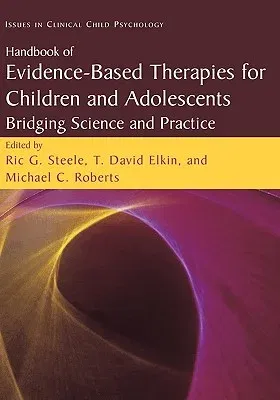Handbook of Evidence-Based Therapies for Children and Adolescents: Bridging Science and Practice (2008)Hardcover - 2008, 10 December 2007

Qty
1
Turbo
Ships in 2 - 3 days
In Stock
Free Delivery
Cash on Delivery
15 Days
Free Returns
Secure Checkout

Part of Series
Issues in Clinical Child Psychology
Print Length
586 pages
Language
English
Publisher
Springer
Date Published
10 Dec 2007
ISBN-10
0387736905
ISBN-13
9780387736907
Description
Product Details
Book Edition:
2008
Book Format:
Hardcover
Country of Origin:
US
Date Published:
10 December 2007
Dimensions:
25.73 x
18.29 x
3.4 cm
ISBN-10:
0387736905
ISBN-13:
9780387736907
Language:
English
Location:
New York, NY
Pages:
586
Publisher:
Weight:
1183.88 gm